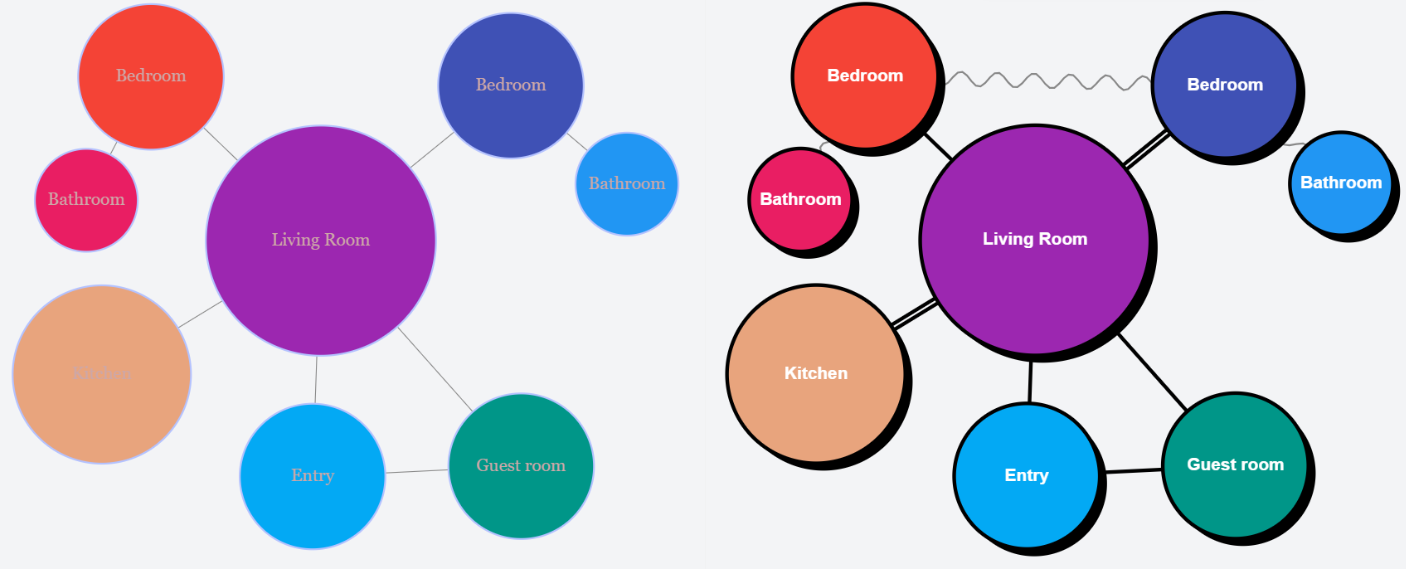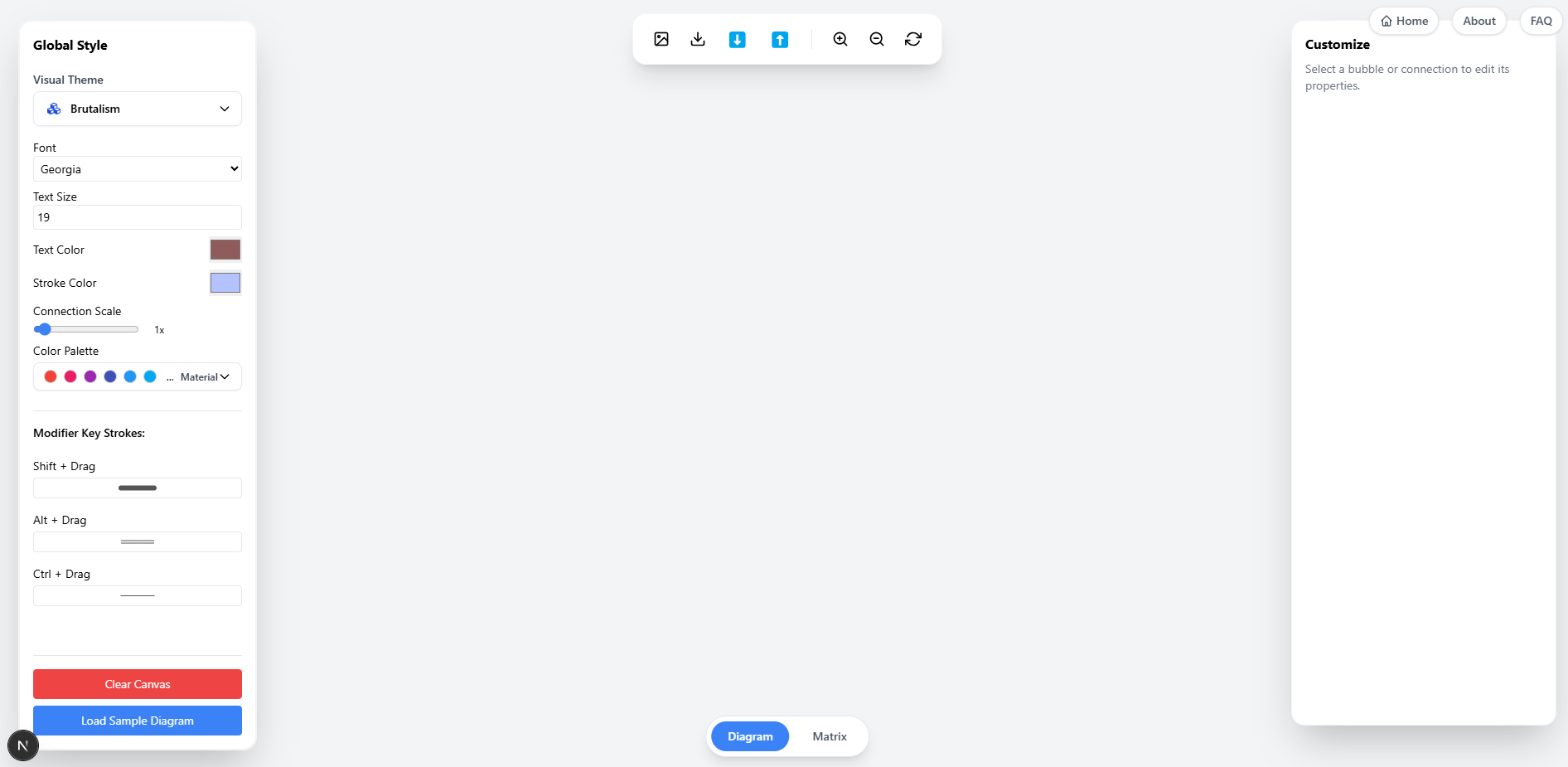Digital vs Traditional Bubble Diagramming: Evolution of a Design Essential
The Evolution of Bubble Diagramming: From Paper to Pixels
Bubble diagrams have long been an essential tool in the architect's design process, serving as the bridge between abstract program requirements and concrete spatial arrangements. Traditionally executed with pen and paper, these diagrams have undergone a significant evolution with the advent of specialized digital tools. This transformation raises important questions about the comparative advantages of traditional versus digital approaches.
While the fundamental purpose remains unchanged—visualizing spatial relationships and functional adjacencies—the means and capabilities have expanded dramatically. Understanding the strengths and limitations of both traditional and digital bubble diagramming can help architects choose the most appropriate approach for their specific design challenges.
Traditional Bubble Diagramming: The Tactile Approach
Hand-drawn bubble diagrams have served architects well for generations, providing an immediate and tactile design experience with several distinctive characteristics:
Strengths of Traditional Methods
- Immediacy and spontaneity: The direct connection between thought and expression allows for rapid ideation
- Gestural quality: Hand movements naturally create organic, fluid forms that can express spatial concepts intuitively
- Accessibility: Requires only basic tools (paper and pen) with no technology barriers or learning curves
- Collaborative potential: Easy for multiple team members to gather around and contribute to a single diagram
- Cognitive benefits: The physical act of drawing engages different cognitive processes than digital creation
Limitations of Traditional Methods
- Difficulty in editing: Major changes often require starting over
- Limited iteration: Testing multiple variations requires redrawing the entire diagram
- Static relationships: Connections and proportions remain fixed once drawn
- Documentation challenges: Physical diagrams require scanning for digital documentation
- Limited analytical capabilities: No built-in tools for area calculations or relationship analysis
Digital Bubble Diagramming: Enhanced Capabilities
Modern digital platforms like Archi Bubble transform bubble diagramming from a static sketch to a dynamic, interactive process:

Strengths of Digital Methods
- Dynamic editing: Real-time adjustments without starting over
- Infinite iteration: Easy testing of multiple configurations
- Precise control: Exact proportions, distances, and relationships
- Analytical capabilities: Automatic area calculations and programmatic analysis
- Enhanced visualization: Color-coding, varying connection types, and customizable appearance
- Documentation integration: Seamless export to design documentation and presentations
- Collaboration features: Remote team input and cloud-based sharing
- Version control: Tracking evolution of design thinking
Limitations of Digital Methods
- Technology barriers: Requires software access and digital literacy
- Learning curve: Mastering specialized tools takes time
- Potential for premature precision: May suggest more definition than appropriate for early stages
- Less gestural expression: Can lack the intuitive quality of hand-drawn work
- Screen constraints: Digital workspace may limit the comprehensive view available with large paper
The Interface Experience: How Tool Design Matters
The user interface of digital bubble diagramming tools significantly impacts their effectiveness:

Key interface elements that enhance digital bubble diagramming include:
- Intuitive bubble creation: Simple drag-and-drop functionality
- Connection controls: Various relationship types and strengths
- Color and labeling systems: Visual organization of program elements
- Measurement tools: Real-time area calculations and proportional adjustments
- Layer management: Organizing complex diagrams into readable components
- Export options: Seamless transition to other design platforms
Hybrid Approaches: Combining the Best of Both Worlds
Many architects find value in combining traditional and digital methods:
Effective Hybrid Workflows
- Initial ideation on paper: Begin with quick sketches to explore initial concepts
- Digital refinement: Transfer promising concepts to digital tools for development
- Print and annotate: Bring digital diagrams into physical space for team markup
- Iterative cycling: Move between hand and digital methods throughout the process
- Presentation layering: Combine hand sketches with digital diagrams for rich presentations
When to Choose Each Approach
Traditional methods work best when:
- Rapidly exploring initial concepts
- Working directly with clients in real-time
- Operating in environments without reliable technology
- Teaching fundamental design thinking to students
- Creating deliberately expressive or abstract diagrams
Digital methods excel when:
- Managing complex programs with many elements
- Requiring precise area calculations
- Exploring multiple iterations efficiently
- Collaborating with remote team members
- Creating presentation-quality diagrams
- Documenting design evolution
Implementing Digital Bubble Diagramming in Practice
For firms transitioning to digital bubble diagramming, consider these implementation strategies:
- Start with simple projects: Build confidence before applying to complex programs
- Create firm-wide standards: Develop consistent approaches to bubble labeling and coding
- Integrate with BIM workflow: Establish clear path from bubble diagrams to later design stages
- Document best practices: Share successful techniques across the team
- Balance technology with fundamentals: Maintain sketching skills alongside digital capabilities
Conclusion: Choosing the Right Tool for the Task
The choice between traditional and digital bubble diagramming isn't binary—it's about selecting the right approach for each specific design challenge and project phase. The most successful designers maintain fluency in both methods, understanding when the immediacy of hand-drawing or the analytical power of digital tools will best serve their design process.
As digital tools continue to evolve, they increasingly complement rather than replace traditional methods, expanding the architect's toolkit rather than narrowing it. By embracing both approaches and understanding their respective strengths, designers can enhance their conceptual process and create more thoughtful, well-resolved architectural solutions.
Ready to explore digital bubble diagramming? Try Archi Bubble → Learn more about our specialized diagramming tools in our comparison of architect-focused tools vs. general graphics software.
Archi Bubble combines the intuitive quality of traditional diagramming with powerful digital capabilities, allowing architects to create, analyze, and refine spatial relationships more effectively than ever before.